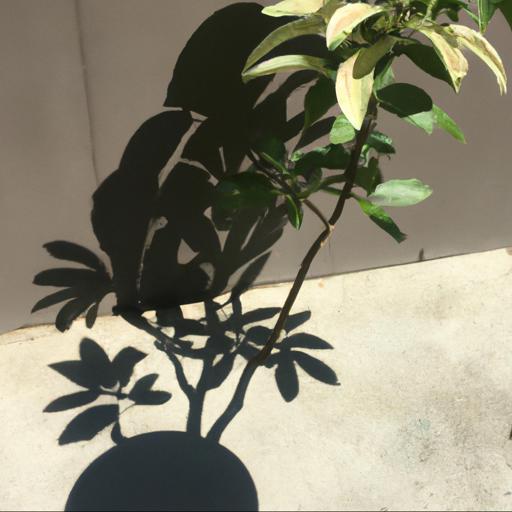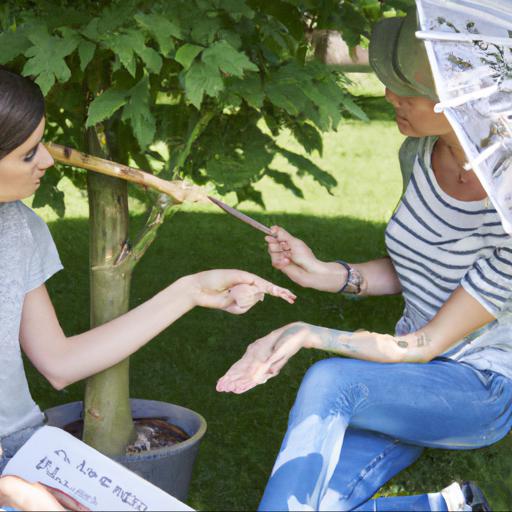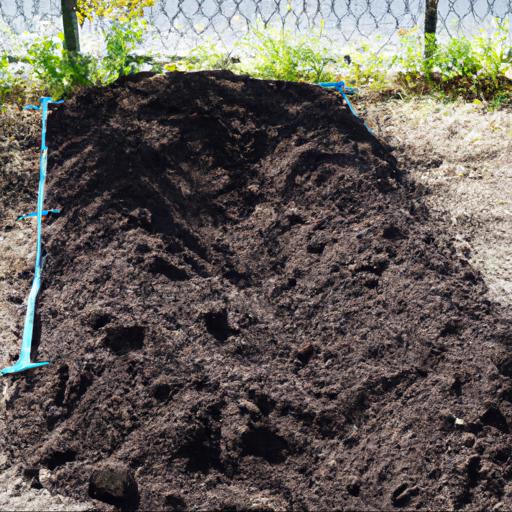Do you have a shady area in your garden that you want to plant? Don’t let the lack of sunlight hold you back! With these five tips for planting in shade, you can create a lush and vibrant garden even in the darkest corners of your yard.
Learn how to choose the right plants, prepare the soil, and more to make the most of your shady space.
Understanding shade and its effects on plant growth

As a UK garden expert, I can confidently say that understanding shade and its effects on plant growth is a great stepping stone to a successful garden. The trick is to know what plants you can grow that thrive in shady conditions.
To get you started, here are five tips for planting in shade. Firstly, pick the right plants – Research your plants before you buy and consider the type of soil you have. When choosing shade-loving plants for your garden, don’t just go for the common types.
Consider opting for something more unusual, like varieties of ferns, hellebores, hydrangeas and hostas. Not only will this make your garden stand out, but these plants will give you an array of colours and textures to enjoy.
Secondly, keep the soil moist – One thing to keep in mind when gardening in the shade is that the soil can dry out more quickly than it would in direct sunlight. To avoid losing your plants to dehydration, make sure to water your plants regularly, with extra attention to newly planted ones. Check the soil regularly to see how moist it is and water your plants accordingly.
Thirdly, think about ideal exposures – When gardening in the shade it is important to recognise the different sorts of shade environments. That is, whether the shade is from trees, a wall, or from an overhead structure like a pergola.
Depending on these elements, different parts of the garden may receive more or less shade, which will affect what plants you can grow. Also, pay attention to the time of day that the shade falls on certain areas. For example, you may find that the area facing north receives more shade than the one facing east.
Fourthly, choose the right mulch – Mulch is a great addition to any garden as it helps to retain moisture and protect the soil from weeds and extreme weather conditions. For a shaded garden, ensure you choose a mulch that is finer in texture, such as leaf mould, chipped bark, or home-made compost. This will allow enough light to filter through the mulch and reach the base of the plants. Finally, look out for plant diseases – Shade can create a humid environment within the garden and can also bring higher levels of pests and diseases. To combat these, make sure you keep on top of your garden maintenance. Regularly check plants for signs of disease and pests, such as rust or soft and discoloured leaves. If you spot any of these, you’ll need to act quickly to prevent the spread of the problem. By following these five tips for planting in shade, you’re well on your way to a successful and attractive shaded garden. These plants are perfect for a shady environment and with enough care and attention, you’ll be able to get the most out of them. Good luck and happy gardening!
Choosing the right plants for shade

Whether you’re a beginner in the garden or an experienced green thumb, choosing the right plants for your shady spots can be a tricky task. Shade is one of the most challenging gardening conditions to work with, but with the right knowledge, you can turn even the darkest patch into a vibrant and colourful display. Here are my five top tips for planting in shade.
First, if you’re looking for foliage cover, try plants such as hostas, ferns, and damson. These plants offer a range of leaf shapes, colours, and textures, as well as varying levels of maintenance required.
Hostas, for instance, are an excellent choice for densely shaded areas as they don’t require direct sunlight to thrive and require very little dead-heading over the summer season. Ferns are a great way to add a rich, tropical look to your shady spots, while Damson’s deep purple berries make it a stunning addition to any garden. Second, don’t forget about bulbs.
Bulbs such as fritillaries, oxalis, and crocuses can tolerate shade and can be planted in the autumn for a display of stunning colour in spring. Planting bulbs in your shady areas will also give you a burst of colour without the maintenance of flowering shrubs which need regular pruning and deadheading over the growing season.
Third, select shrubs that can tolerate shade. Photinia, Lavenders, and trees like Weeping willow and Winter cherry require little to no direct sunlight and will add an interesting shape and structure to your garden.
These shrubs can form effective back drops for your bedding plants and will attract plenty of birds and butterflies to your garden. Fourth, look for long blooming perennials. Plants such as Pulmonarias, Brunneras and Foxgloves offer a long season of colour without taking up too much space.
Their semi-evergreen foliage provides interest even during the colder months and their colourful blooms will attract wildlife to your garden. Finally, use ground covers. Plants such as Ajuga, Vinca, and Mazus are perfect for shady spots. They’ll patch up empty ground beneath your shrubs and trees and provide a continuous source of colour throughout the year. With the right knowledge, you can turn even the shadiest of spots into a colourful oasis. Give these five tips a try and you’ll be sure to inject some life into your shady spots!
Preparing the soil for planting in shade

Many gardeners are under the misconception that preparing the soil for planting in the shade is unforgiving and difficult. Planting in the shade can indeed have its challenges, however, with the right tips and advice, you can ultimately have success in this area of gardening as a UK garden expert.
You can expect lush plants, beautiful color, and a healthy growth when preparing the soil for planting shady areas. Here are five tips to get you started that will help you understand the process of planting and caring for plants in the shade. First, it is important to determine the type of soil in the area you are planting in.
The texture and composition of the soil can vary and must be taken into consideration to ensure success when planting in the shade. Clay soils contain more of the minerals needed for plant growth, whereas sandy soils require additions of peat moss and compost to retain the necessary moisture. Ensure that you are also correctly identifying the pH of your soil and adjusting accordingly as proper drainage and aeration is essential for healthy plant growth.
Second, it is important to condition the soil by working organic matter into the soil. This can be done by incorporating compost or leaf mould into the top 6 inches of soil.
Doing this will help ensure that your plants receive the necessary nutrients to help them flourish. In addition, mulch should also be added to the soil. Apply a thick layer of mulch around the base of your plants.
This will prevent water loss and control soil temperature in both winter and summer months, protecting your plants from extreme temperatures. Third, when preparing the soil for planting shady areas, it is important to choose the correct plants.
Shade tolerant plants, like Hostas and Ferns, are better suited for shadier areas and will thrive in the moderate sunlight provided from the shade. By selecting the correct plants for the area, you will be able to maximize success and have a healthier garden overall. Fourth, when it comes to watering, keep in mind that you’ll need to water less often in shadier areas. This is due to the fact that plants in the shade receive less direct sunlight and therefore do not require as much hydration. Be sure to check the moisture level in the soil before deciding when or if to water. Finally, Keep in mind that when tending to plants in the shade it is best to prune with caution. Pruning too much can stunt a plant’s growth, especially in shade-tolerant plants like Hostas. Pruning should be done with careful precision as only making slight adjustments will do the trick. At the end of the day, there are a few important concepts to remember when it comes to preparing the soil for planting in shade. Understanding the soil conditions of the area, knowing which plants adapt best to shadier climates, and having a thorough understanding of the pruning procedure are all essential for having a successful garden in the shade. With this advice in mind, you’ll be able to take your gardening prowess to the next level.
Tips for planting in shade
. Successful gardening in the shade requires a gardener to be patient, observant, and empowered with knowledge.
Planting in the shade can be an exciting undertaking, as it gives gardeners the freedom to be creative when it comes to selecting plants that fit their preferred aesthetic. Here are five tips that will help ensure success when planting in the shade:1) Get familiar with native plants and species that thrive in low-light environments. Such plants can include a variety of shade-loving shrubs, trees, ferns, astilbe, and hostas.
Understanding the conditions of the desired planting location can help to determine the best plants for that area. 2) Prepare the soil properly. Finding success in the shade often relies on good soil condition.
Consider adding organic matter, such as compost, to boost moisture holding capacity and increase fertility. Raised beds are also an option, as they allow for better drainage and improved air circulation.
3) Reduce competition for light and nutrients. Planting in the shade often means you must compete with nearby trees for light and resources.
Consider thinning out the canopy of large trees if possible, or remove any invasive species if they shade out the desired plants. 4) Consider artificial light sources if necessary. Shade-loving plants occasionally don’t get enough light in the shade, resulting in slow growth or poor blooms.
Supplemental lighting can be beneficial under the appropriate circumstances. 5) Regularly apply an organic mulch. A layer of organic mulch not only helps keep the soil cool and moist, it also reduces weeds and helps retain moisture. An organic mulch such as wood chips or leaves can help create a nice environment for shade plants to thrive in. Following these five tips can help gardeners to be more successful when planting in the shade. A properly prepared environment and the right mix of shade-loving plants can give a garden a lush, vibrant feel. With patience and observation, a gardener will be able to create a space to be proud of.
Conclusion
Having trouble planting in the shade? Here are five tips to help you succeed: 1) Choose plants that are adapted to low light; 2) Amend your soil with organic matter to help retain moisture; 3) Mulch generously to help keep the soil cool; 4) Water deeply and regularly; and 5) Prune and fertilize as needed.
With these tips, you can create a beautiful garden in even the shadiest of spots.
FAQ
What types of plants are best suited for planting in shade?
The types of plants best suited for planting in shade include ferns, hostas, impatiens, begonias, caladiums, and ivy.
What are the benefits of planting in shade?
The benefits of planting in shade include reduced water usage, protection from extreme temperatures, and reduced exposure to pests and diseases. Additionally, shade can help create a more pleasant and comfortable outdoor environment.
What are the best practices for planting in shade?
The best practices for planting in shade include choosing plants that are adapted to low light, providing adequate soil moisture, avoiding overcrowding, and mulching to help retain moisture and suppress weeds.
How can I ensure my plants get enough sunlight when planting in shade?
To ensure your plants get enough sunlight when planting in shade, you can choose plants that are adapted to low light conditions, such as ferns, hostas, and impatiens. You can also prune trees and shrubs to allow more light to reach the plants. Additionally, you can install reflective surfaces, such as mirrors or light-colored stones, to help reflect more light onto the plants.
What are the most common mistakes when planting in shade?
The most common mistakes when planting in shade are not providing enough water, not providing enough nutrients, planting too deep, and planting the wrong plants for the amount of shade available.
What are some tips for maintaining plants in shade?
1. Choose plants that thrive in shade, such as ferns, hostas, and impatiens. 2. Make sure the soil is moist but not soggy. 3. Provide adequate drainage. 4. Fertilize regularly with a balanced fertilizer. 5. Prune plants regularly to keep them from becoming too leggy. 6. Avoid over-watering and water only when the soil is dry. 7. Provide some protection from strong winds. 8. Mulch around plants to help retain moisture.

